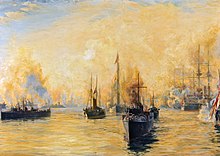
Princess Victoria Patricia Helena Elizabeth of Connaught, later Lady Patricia Ramsay, was a granddaughter of Queen Victoria. Upon her marriage to Alexander Ramsay, she relinquished her title of a British princess and the style of Royal Highness.

Princess Helena Victoria of Schleswig-Holstein was a granddaughter of Queen Victoria of the United Kingdom. From 1917 her name was simply Princess Helena Victoria.
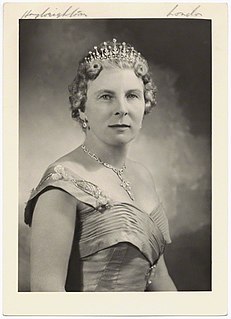
Lady May Helen Emma Abel Smith was a relative of the British royal family. She was a great-granddaughter of Queen Victoria and a niece of Queen Mary. She led a private life in Britain. From 1958 until 1966, she lived in Brisbane, while her husband, Sir Henry Abel Smith, served as the governor of Queensland.

Charles Edward, Duke of Saxe-Coburg and Gotha was the last sovereign duke of Saxe-Coburg and Gotha, from 30 July 1900 until 1918. A male-line grandson of Queen Victoria and Prince Albert, he was also until 1919 a Prince of the United Kingdom and from birth held the British titles of Duke of Albany, Earl of Clarence and Baron Arklow.

Princess Louise Margaret of Prussia, later Duchess of Connaught and Strathearn, was a member of the House of Hohenzollern and of the British royal family. She served as the viceregal consort of Canada while her husband, Prince Arthur, Duke of Connaught and Strathearn, served as the governor general, from 1911 to 1916.

Princess Beatrice Leopoldine Victoria of Saxe-Coburg and Gotha was a member of the British royal family, a male-line granddaughter of Queen Victoria. She later married into the Spanish royal family, and was the wife of Prince Alfonso de Orleans y Borbón, Infante of Spain, a first cousin of Alfonso XIII of Spain.
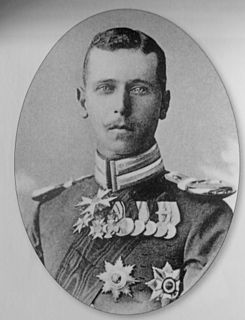
Alfred, Hereditary Prince of Saxe-Coburg and Gotha, was the son and heir apparent of Alfred, Duke of Saxe-Coburg and Gotha. He died aged 24 under circumstances still not entirely clear. He was a first cousin of Kaiser Wilhelm II of Germany, King George V of the United Kingdom and Tsar Nicholas II of Russia.

Princess Alexandra Louise Olga Victoria of Saxe-Coburg and Gotha, was the fourth child and third daughter of Alfred, Duke of Saxe-Coburg and Gotha, and Grand Duchess Maria Alexandrovna of Russia. As the wife of Ernst II, she was Princess consort of Hohenlohe-Langenburg. She was a granddaughter of both Queen Victoria of the United Kingdom and Tsar Alexander II of Russia.

Princess Sibylla of Saxe-Coburg and Gotha was a member of the Swedish royal family and the mother of the current King of Sweden, Carl XVI Gustaf.

The last Bulgarian royal family is a line of the Koháry branch of the House of Saxe-Coburg and Gotha, which ruled Bulgaria from 1887 to 1946. The last tsar, Simeon II, became Prime Minister of Bulgaria in 2001 and remained in office until 2005. Members of the royal family hold the titles of Prince (Princess) of Bulgaria and Duke (Duchess) in Saxony, with the style of Royal Highness.
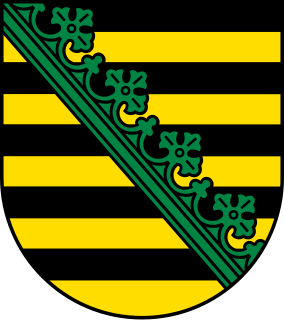
The coat of arms of the present-day German free state of Saxony shows a tenfold horizontally-partitioned field of black (sable) and gold/yellow (or) stripes, charged with a green (vert) crancelin running from the viewer's top-left to bottom-right. Although the crancelin is sometimes shown bent (embowed) like a crown, this is due to artistic license. The coat of arms is also displayed on the state flag of Saxony.
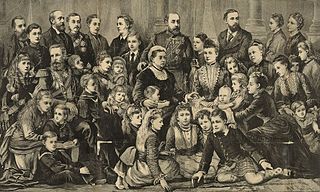
Queen Victoria, the British monarch from 1837 to 1901, and Prince Albert had 9 children, 42 grandchildren, and 87 great-grandchildren.
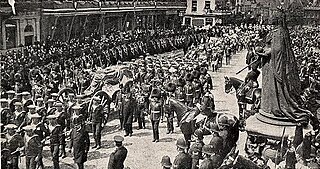
The state funeral of Edward VII, King of the United Kingdom of Great Britain and Ireland and Emperor of India, occurred on Friday, 20 May 1910.
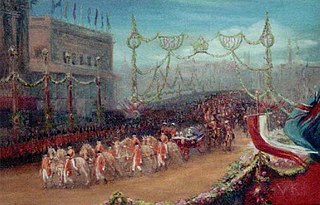
The Diamond Jubilee of Queen Victoria was officially celebrated on 22 June 1897 to mark the occasion of the 60th anniversary of Queen Victoria's accession on 20 June 1837. It was the first Diamond Jubilee celebration of any British monarch in history at that time.

The Golden Jubilee of Queen Victoria was celebrated on 20 and 21 June 1887 to mark the 50th anniversary of Queen Victoria's accession on 20 June 1837. It was celebrated with a Thanksgiving Service at Westminster Abbey, and a banquet to which 50 European kings and princes were invited.

St George's Chapel at Windsor Castle in England is a castle chapel built in the late-medieval Perpendicular Gothic style. It is both a Royal Peculiar and the Chapel of the Order of the Garter. St George's Chapel was founded in the 14th century by King Edward III and extensively enlarged in the late 15th century. It is located in the Lower Ward of the castle. The castle has belonged to the monarchy for almost 1,000 years and was a principal residence of Elizabeth II before her death. The chapel has been the scene of many royal services, weddings and burials – in the 19th century, St George's Chapel and the nearby Frogmore Gardens superseded Westminster Abbey as the chosen burial place for the British royal family. The running of the chapel is the responsibility of the dean and Canons of Windsor who make up the College of Saint George. They are assisted by a clerk, verger and other staff. The Society of the Friends of St George's and Descendants of the Knights of the Garter, a registered charity, was established in 1931 to assist the college in maintaining the chapel.

On 6 July 1893, Prince George, Duke of York, and Princess Mary of Teck were married at the Chapel Royal, St. James's Palace, in London, England.

The wedding of Nicholas II of Russia to Alexandra Feodorovna occurred on 26 November [O.S. 14 November] 1894 at the Grand Church of the Winter Palace.

The coronation of George V and his wife Mary as king and queen of the United Kingdom and the British Dominions, and as emperor and empress of India, took place at Westminster Abbey, London, on Thursday 22 June 1911. This was the second of four such events held during the 20th century and the last to be attended by royal representatives of the great continental European empires.
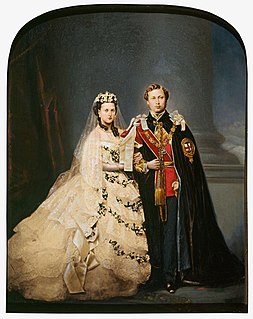
The wedding of Albert Edward, Prince of Wales, and Princess Alexandra of Denmark took place on 10 March 1863 at St. George's Chapel, Windsor Castle. It was the first royal wedding to take place at St. George's, and the last wedding of a Prince of Wales until Prince Charles and Lady Diana Spencer's 1981 wedding.



